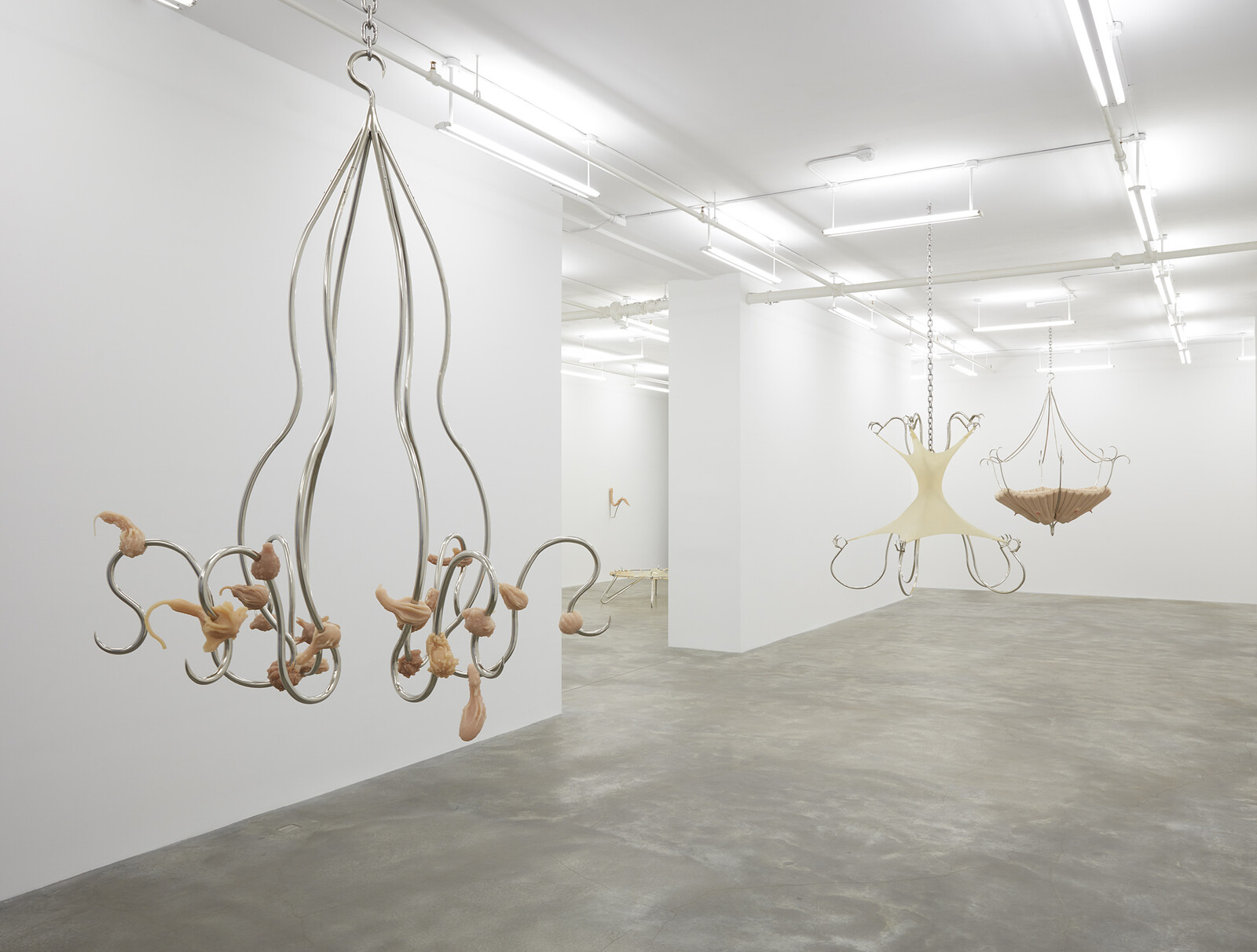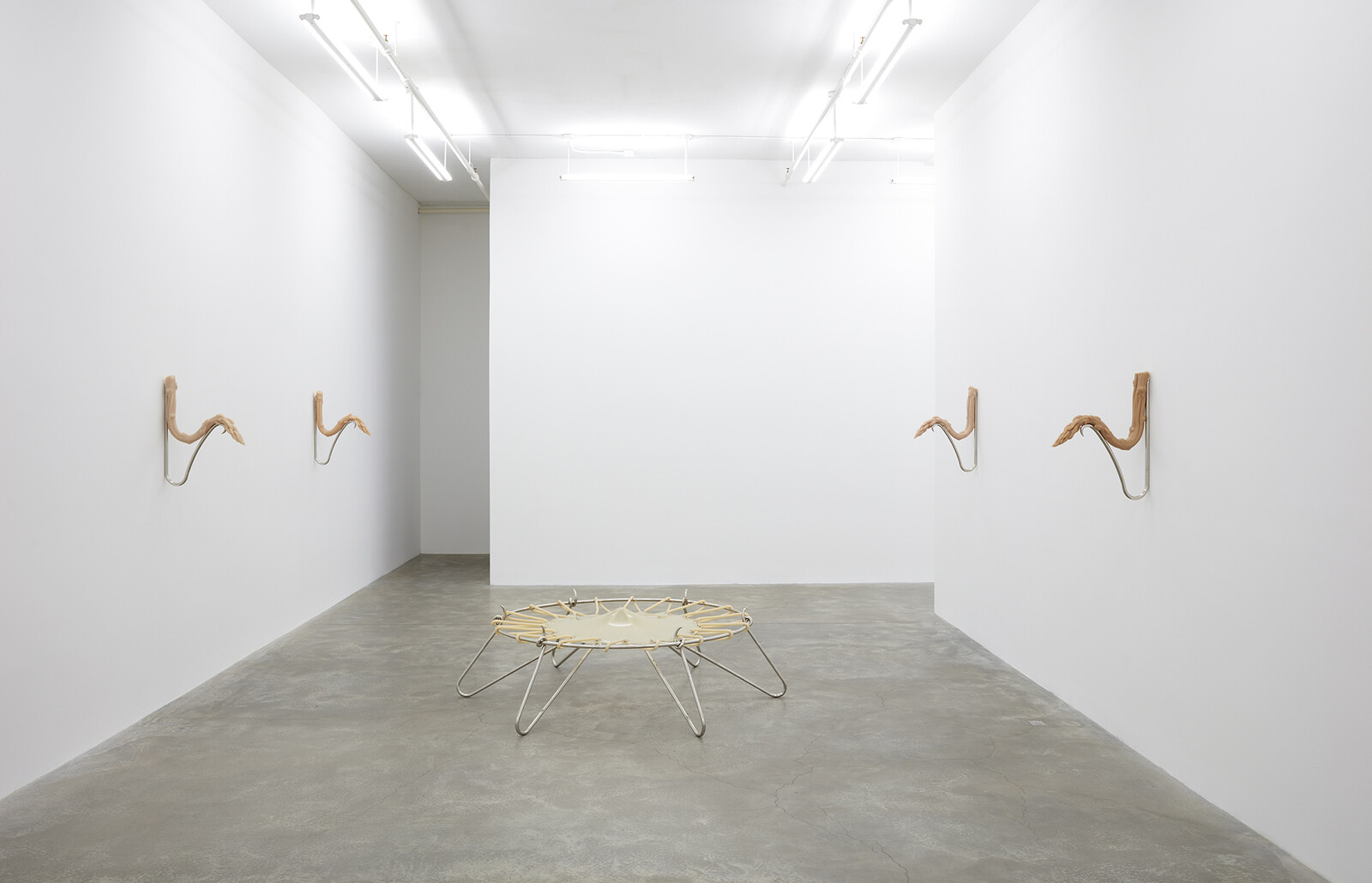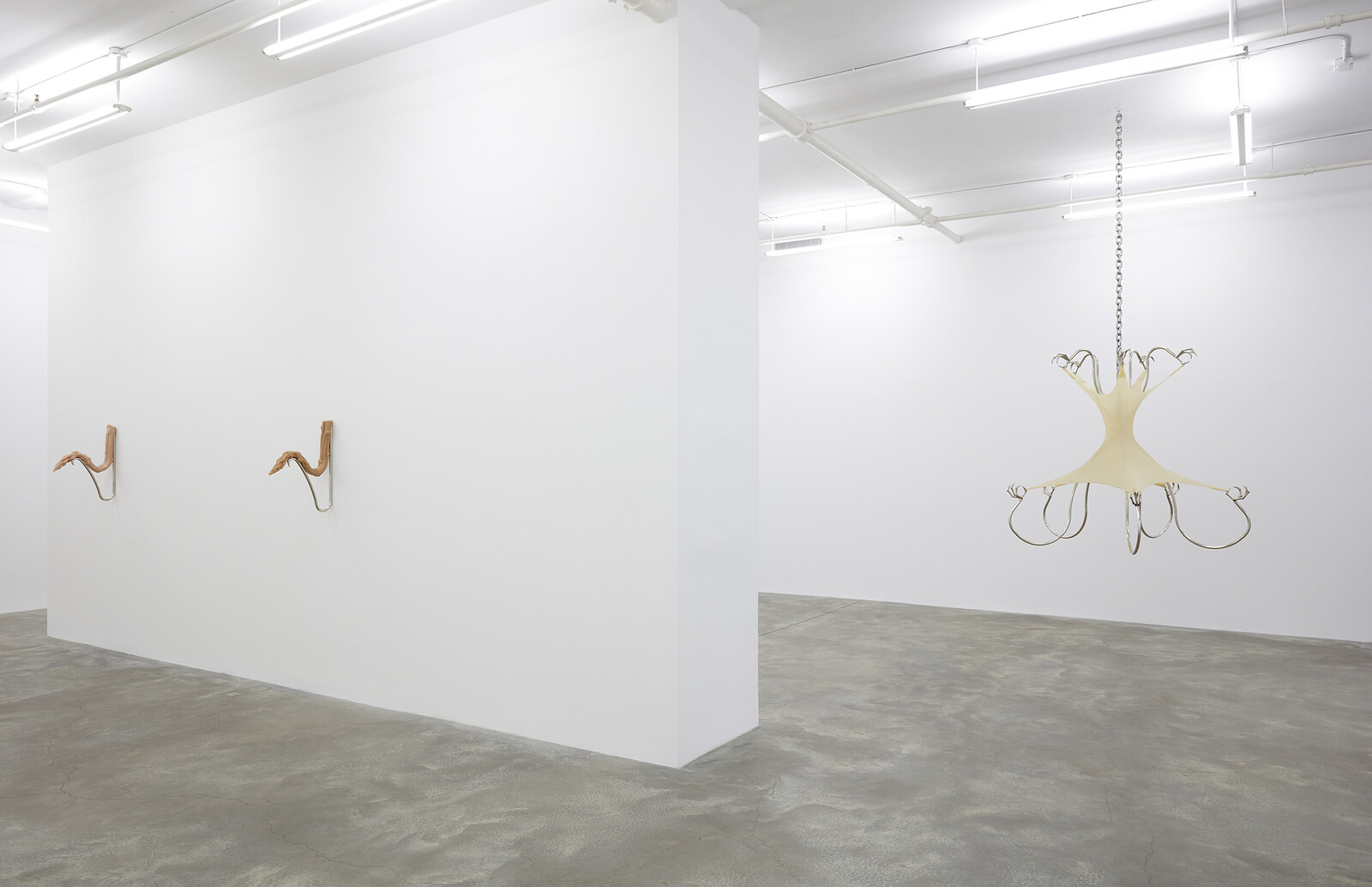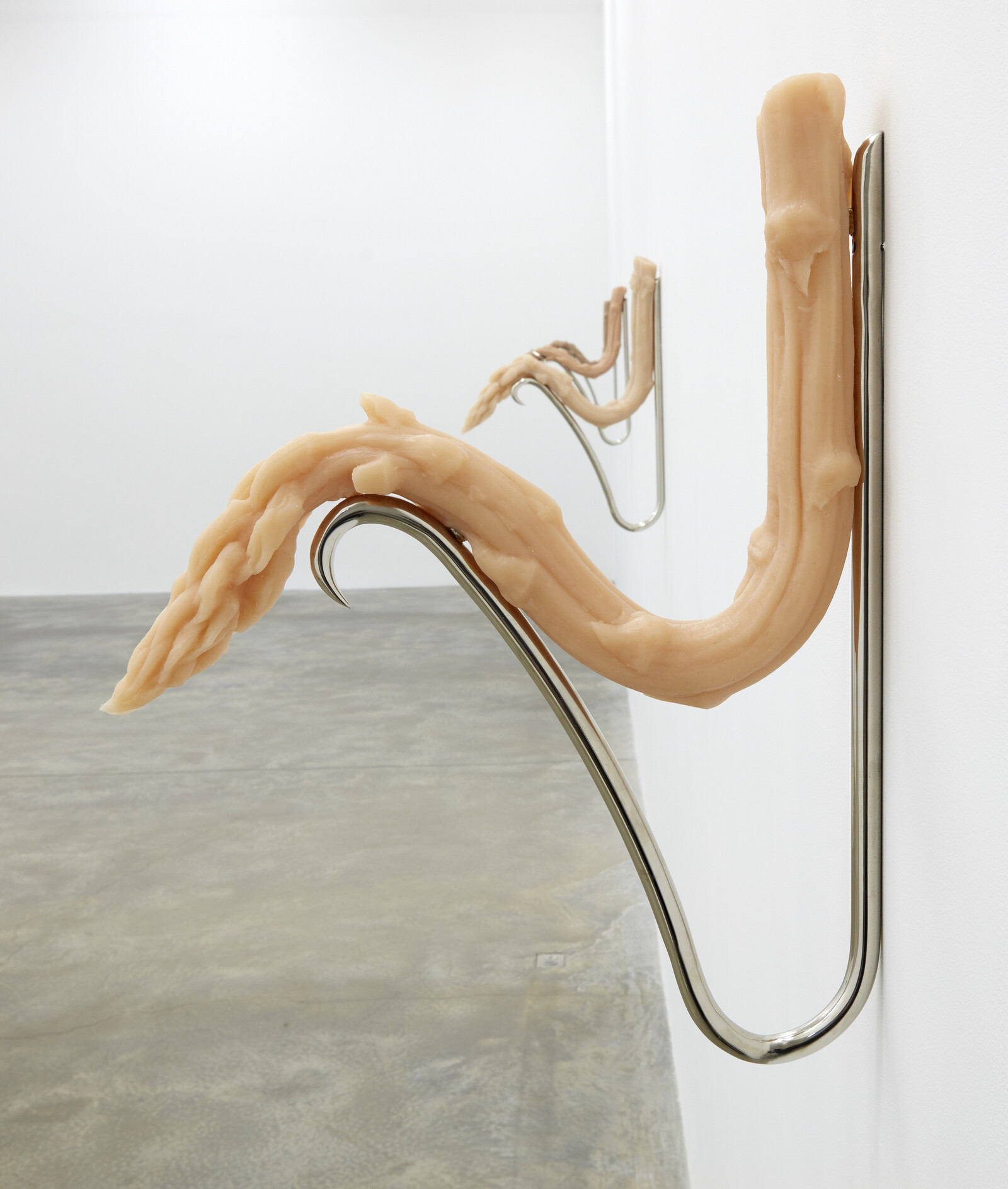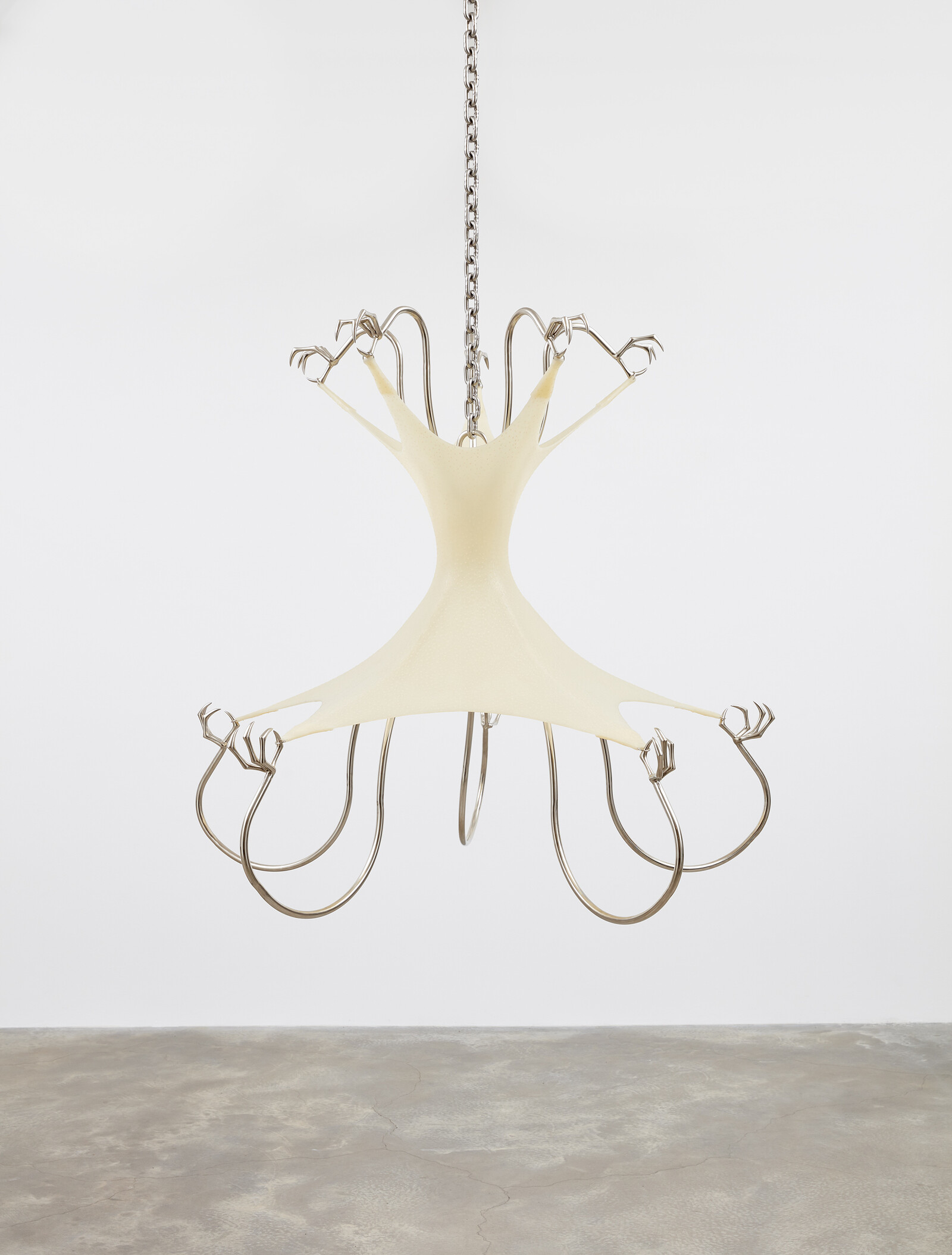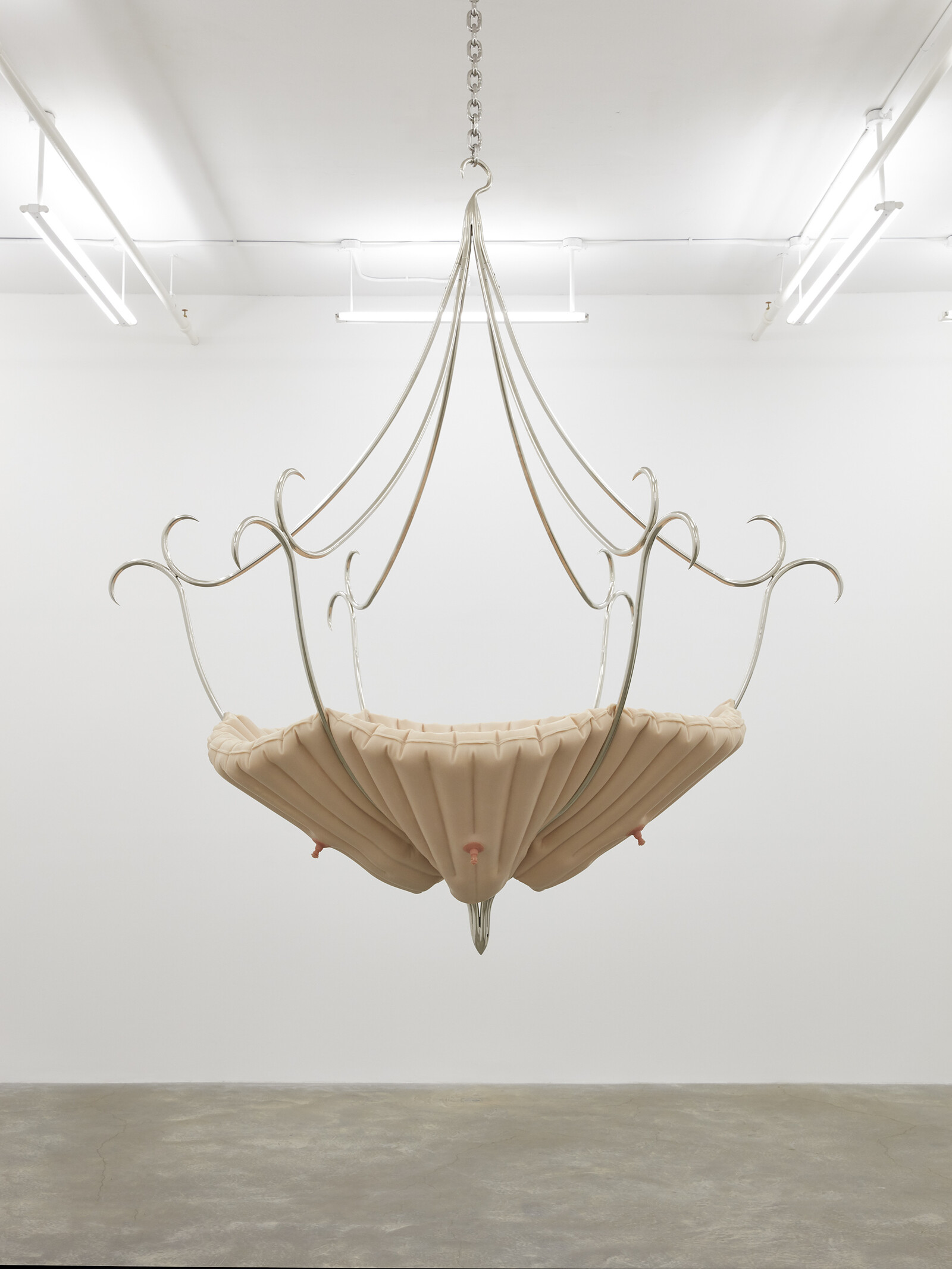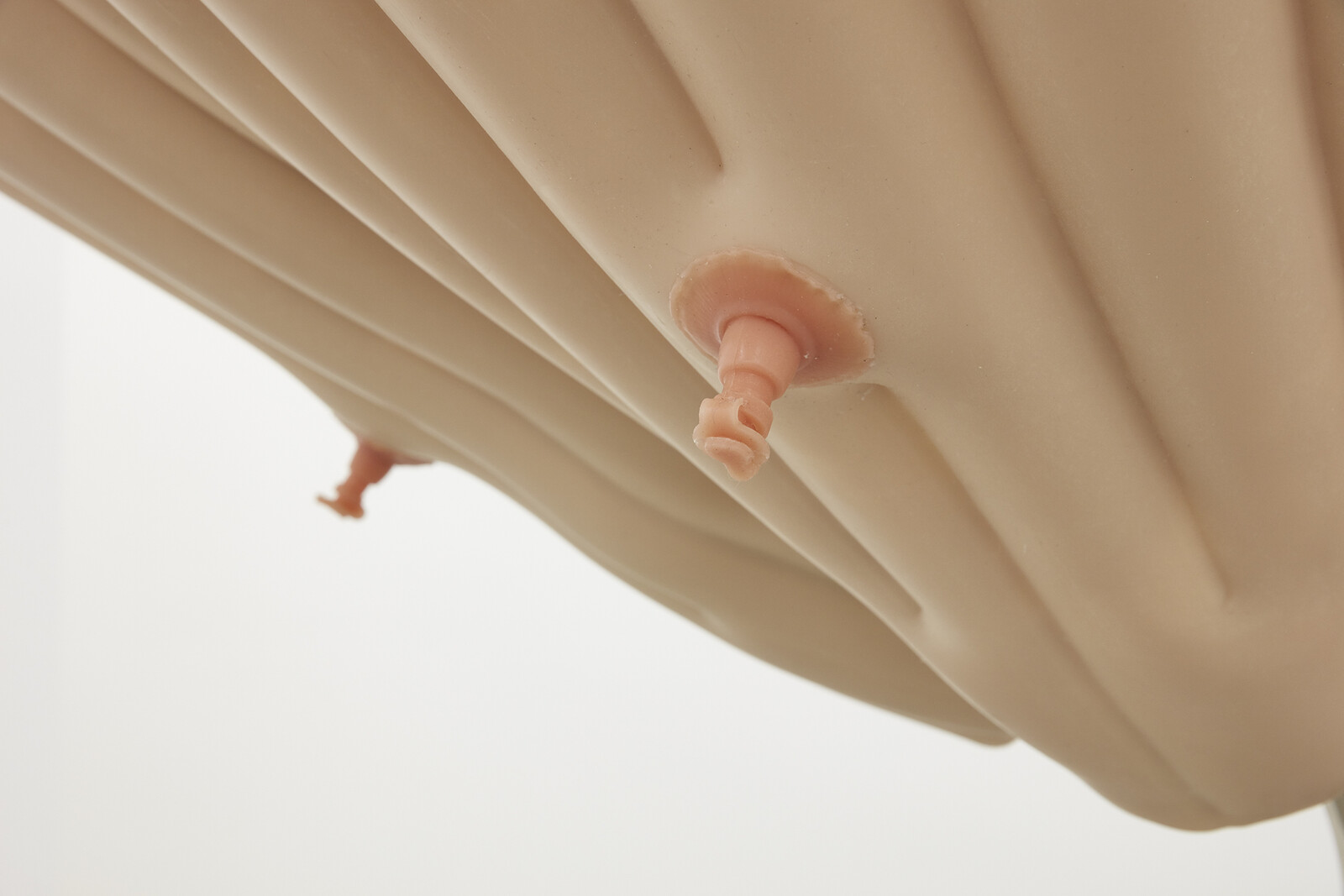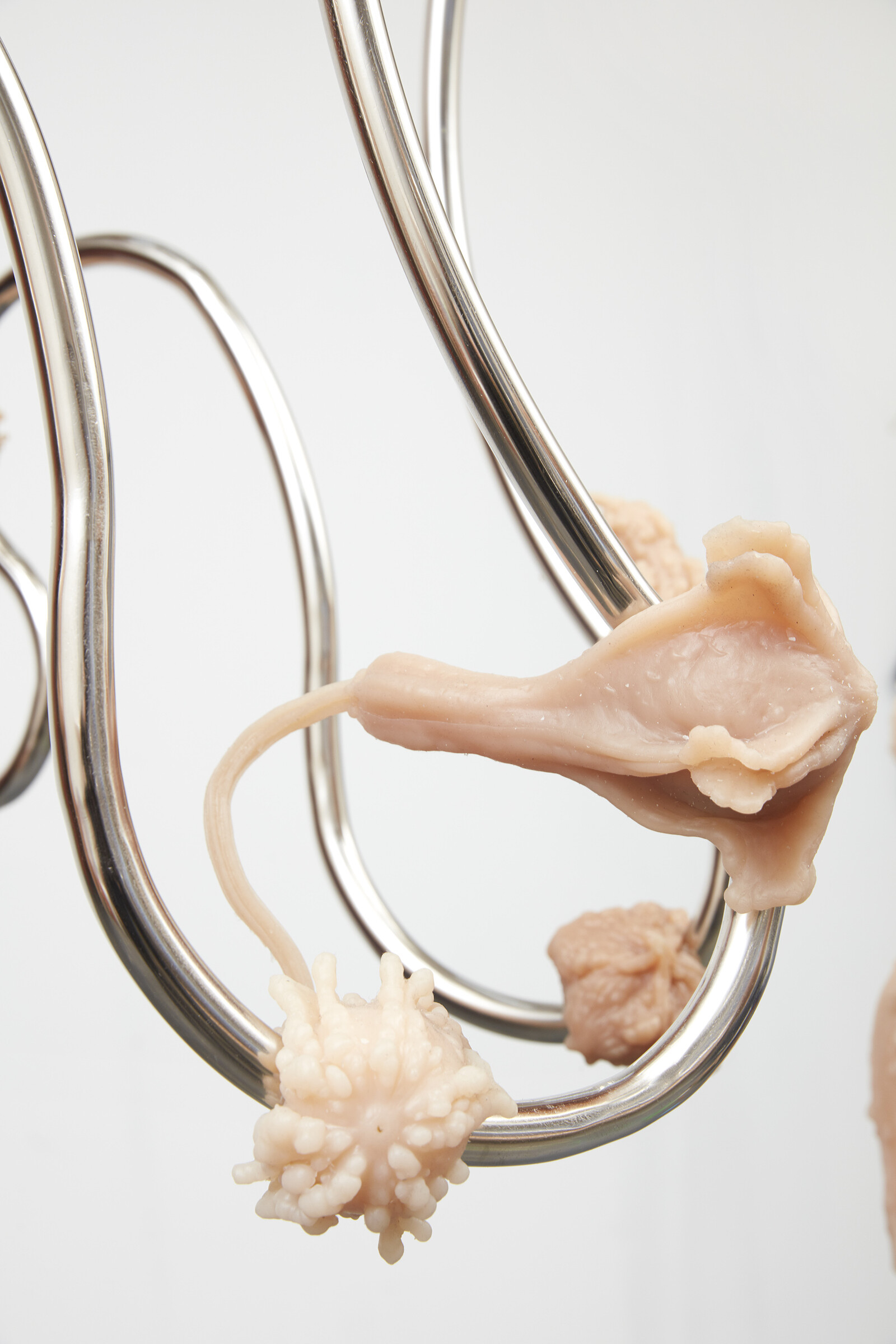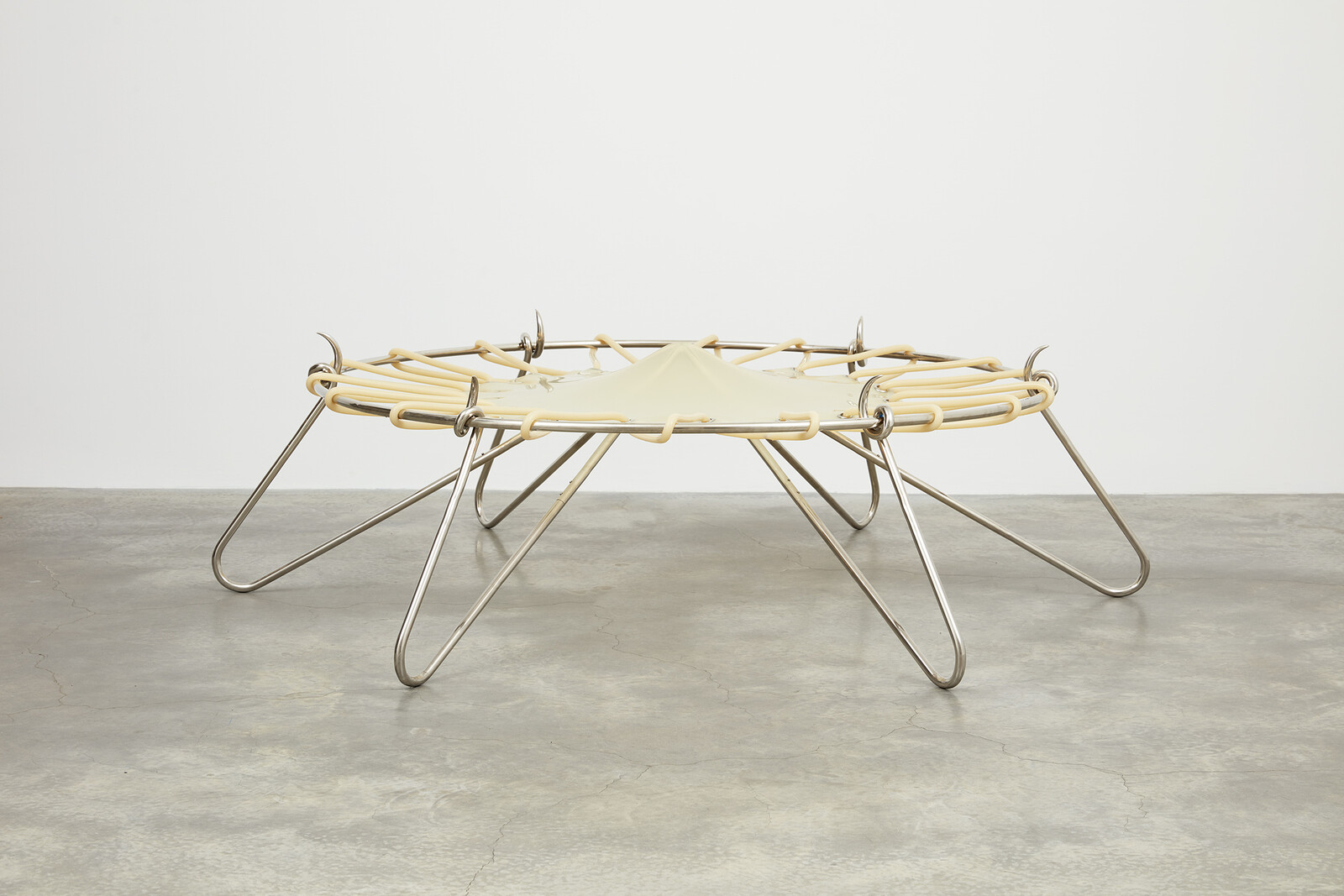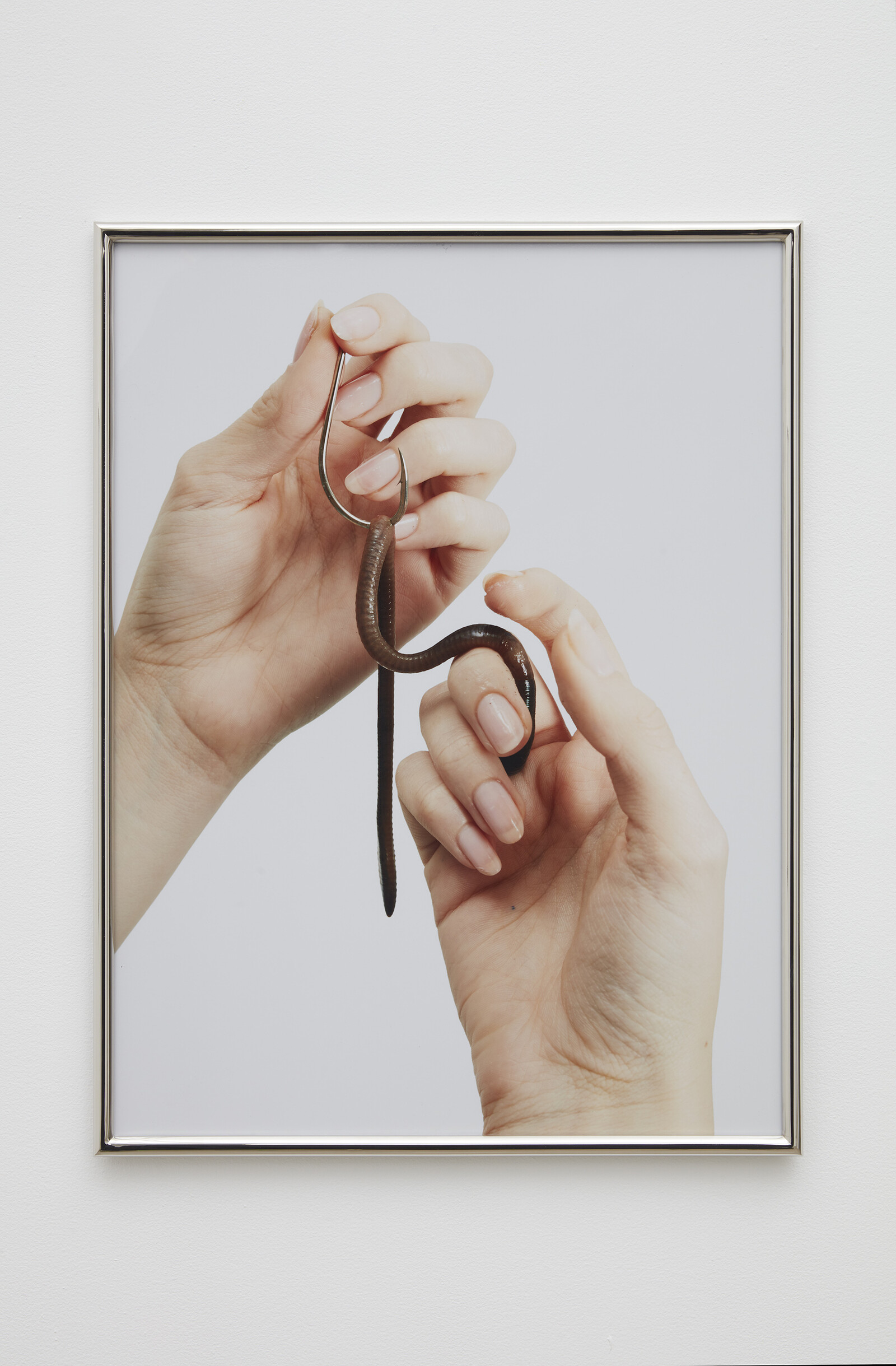Hannah Levy’s sculptures can make you shudder. Working between sculpture and design, she extracts commonplace objects from domestic contexts and defamiliarizes them through her use of unexpected materials, distortion of scale, and exaggeration of their formal properties: their curves and bends. The sculptures in “Pendulous Picnic,” her first solo exhibition with Casey Kaplan Gallery in New York, combine silicone and steel—the artist’s signature materials—into multifaceted structures that conflate forms resembling vegetables and body parts in disturbing ways. Take her untitled series of wall-mounted sculptures (all 2019), in which metal fixtures hold up silicone casts of enlarged asparagus, a recurring motif. The artist renders each phallic object limp, drooping over the curved metal as if it might slide off any second—thereby denying any imagined potential for sexual pleasure.
More striking are Levy’s suspended sculptures, something of a departure for the artist. Hanging from the ceiling in the first gallery are three large, untitled structures (all 2020) reminiscent of nursery mobiles—though far too large and hazardous to be suitable for infants. The nickel-plated steel frames curl into chillingly sharp edges resembling fishhooks. The metal is pierced with silicone objects whose surfaces resemble pale skin: in the first sculpture the viewer encounters, casts of assorted gourds evoke ovaries, while in the second, a piece of silicone is stretched into an hour-glass shape with an opening in the middle. The third sculpture appears at first glance to be a giant breast—closer inspection reveals it to be a mold of an inflatable mattress, its pointed pink nipples being the air plug caps.
The exhibition text cites Levy’s indebtedness to Louise Bourgeois and Eva Hesse—we might add Lee Bontecou and Lynda Benglis to the list—placing her in a lineage of sculptors whose use of soft and malleable materials went against the geometric rigidness of male-dominated minimalist art. The work also exhibits the influence of Meret Oppenheim, negating homeware’s function and shattering our assumed familiarity with objects. Yet such affinities fail adequately to explain the particular physical response—an unsettling mixture of attraction and anxiety—that Levy’s work engenders. Its subtle cruelty recalls Alberto Giacometti’s surrealist sculptures from the early thirties, in which he explored fantasies of aggression and eroticism. In her 1984 essay “No More Play,” Rosalind Krauss analyzes the inherent sexuality of Giacometti’s plaster and steel sculpture Suspended Ball (1930–31), describing the movement of the ball over a wedge-shaped axis as “less one of caressing than of cutting […] both sensual and sadistic.” The thorny edges of Levy’s steel structures, which penetrate her bodily forms, echo such sadomasochistic tendencies.
A smaller room showcasing two recent photographs reinforces the impression of cruelty, depicting two feminine hands mounting a worm onto a fishhook. Despite these rather morbid images, Levy’s sculptures allow room for pleasure as well as pain. On the floor is an untitled new work resembling a diaphragm or dental dam stretched over a circular steel structure. The steel gently presses into the silicone from underneath, allowing it to stretch and expand without piercing it. Contrary to Giacometti’s use of materials that erode—and thereby undo—one another through rubbing and touching, Levy chooses materials that are popular in the production of sex toys, complicating the relationship between fear and arousal. Levy’s structures expand, stretch, curve, and ooze into the surrounding space, making manifest the erotics of silicone and steel.
